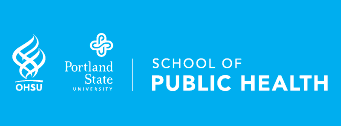Presenter Biography
My name is Hana Warmflash and I'm a third year dual medical and public health student at OHSU-PSU.
Program/Major
MD / MPH - Epidemiology
Student Level
Doctoral
Presentation Type
Presentation
Start Date
4-10-2025 3:00 PM
End Date
4-10-2025 3:15 PM
Creative Commons License or Rights Statement

This work is licensed under a Creative Commons Attribution 4.0 License.
Persistent Identifier
https://archives.pdx.edu/ds/psu/43479
Subjects
Student-Run Free Clinic, Quality Improvements, Homeless Shelter
Abstract
Intro:
Student run free medical clinics (SRFC) are present at roughly 75% of Association of American Medical Colleges member institutions1,2 providing care for underserved populations, such as those experiencing houselessness. 3 Persons experiencing houselessness have a higher burden of illness than housed persons but experience a greater barrier to obtaining care4. Delays in care result in more complex and longer hospitals stays4,5.
Our SRFC, Bridges Collaborative Care Clinic (BCCC), functions to address emergent complaints and monitor chronic health conditions. We aim to demonstrate how relocating from River District Navigation Center (RDNC) to a more accessible location, Resource Center (RC), enabled us to reach higher acuity patients.
Methods:
Deidentified patient data from medical clinics between January 2024 to February 2025 were analyzed using RStudio v2024. The proportion of ED escalations between the two sites was analyzed using Fisher’s Exact Test due to small sample sizes (α = 0.05)
Results:
RDNC and RC hosted 30 and 27 clinics, and transferred 4 and 9 patients to the ED, respectively. Top patient concerns at RDNC included health maintenance and pain, while at RC included hospital discharge follow-up, nonhealing wounds, pneumonia and frostbite. At RC, the reproductive care clinic saw at least two patients, while 50% of reproductive clinics at RDNC saw none.
Conclusion:
Addressing high-acuity needs at SRFCs may reduce future healthcare costs. There were five more ED referrals at RC, a finding which is clinically relevant, but not statistically significant. However, we observed distinct chief concerns between two clinics with RC’s higher acuity.
Included in
Health Policy Commons, Other Public Affairs, Public Policy and Public Administration Commons, Policy Design, Analysis, and Evaluation Commons, Public Health Commons
Comparing Acuity of Patient Care at Student Run Free Medical Clinic Locations
Intro:
Student run free medical clinics (SRFC) are present at roughly 75% of Association of American Medical Colleges member institutions1,2 providing care for underserved populations, such as those experiencing houselessness. 3 Persons experiencing houselessness have a higher burden of illness than housed persons but experience a greater barrier to obtaining care4. Delays in care result in more complex and longer hospitals stays4,5.
Our SRFC, Bridges Collaborative Care Clinic (BCCC), functions to address emergent complaints and monitor chronic health conditions. We aim to demonstrate how relocating from River District Navigation Center (RDNC) to a more accessible location, Resource Center (RC), enabled us to reach higher acuity patients.
Methods:
Deidentified patient data from medical clinics between January 2024 to February 2025 were analyzed using RStudio v2024. The proportion of ED escalations between the two sites was analyzed using Fisher’s Exact Test due to small sample sizes (α = 0.05)
Results:
RDNC and RC hosted 30 and 27 clinics, and transferred 4 and 9 patients to the ED, respectively. Top patient concerns at RDNC included health maintenance and pain, while at RC included hospital discharge follow-up, nonhealing wounds, pneumonia and frostbite. At RC, the reproductive care clinic saw at least two patients, while 50% of reproductive clinics at RDNC saw none.
Conclusion:
Addressing high-acuity needs at SRFCs may reduce future healthcare costs. There were five more ED referrals at RC, a finding which is clinically relevant, but not statistically significant. However, we observed distinct chief concerns between two clinics with RC’s higher acuity.


